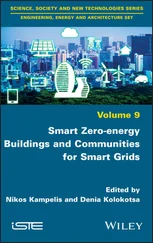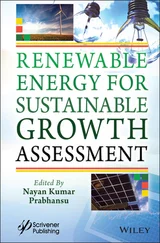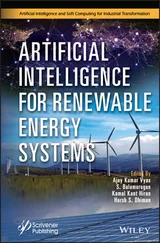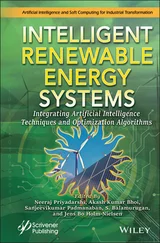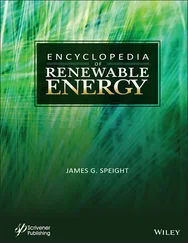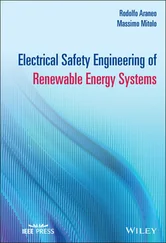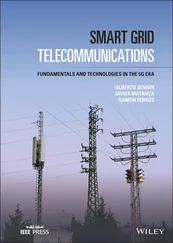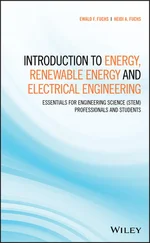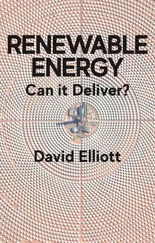1 Cover
2 Title page
3 Copyright
4 Preface
5 1 Renewable Energy Technologies 1. Introduction 1.1 Types of Renewable Energy References
6 2 Present Power Scenario in India 2.1 Introduction 2.2 Thermal Power Plant 2.3 Gas-Based Power Generation 2.4 Nuclear Power Plants 2.5 Hydropower Generation 2.6 Solar Power 2.7 Wind Energy 2.8 The Inherited Structure References
7 3 Introduction to Smart Grid 3.1 Need for Smart Grid in India 3.2 Present Power Scenario in India 3.3 Electric Grid 3.4 Overview of Smart Grids 3.5 Smart Grid Components for Transmission System 3.6 Smart Grid Functions Used in Distribution System 3.7 Case Study: Techno-Economic Analysis 3.8 Case Study: Solar PV Awareness of Puducherry SG Pilot Project 3.9 Recent Trends in Smart Grids References
8 4 Internet of Things–Based Advanced Metering Infrastructure (AMI) for Smart Grids 4.1 Introduction 4.2 Advanced Metering Infrastructure 4.3 IoT-Based Advanced Metering Infrastructure 4.4 Results 4.5 Discussion 4.6 Conclusion and Future Scope References
9 5 Requirements for Integrating Renewables With Smart Grid 5.1 Introduction 5.2 Challenges in Integrating Renewables Into Smart Grid 5.3 Conclusion References
10 6 Grid Energy Storage Technologies 6.1 Introduction 6.2 Grid Energy Storage Technologies: Classification 6.3 Grid Energy Storage Technologies: Analogy 6.4 Applications of Energy Storage System 6.5 Power Conditioning of Energy Storage System 6.6 Conclusions References
11 7 Multi-Mode Power Converter Topology for Renewable Energy Integration With Smart Grid 7.1 Introduction 7.2 Literature Survey 7.3 System Architecture 7.4 Modes of Operation of Multi-Mode Power Converter 7.5 Control Scheme 7.6 Results and Discussion 7.7 Conclusion References
12 8 Decoupled Control With Constant DC Link Voltage for PV-Fed Single-Phase Grid Connected Systems 8.1 Introduction 8.2 Schematic of the Grid-Tied Solar PV System 8.3 Simulation and Experimental Results of the Grid Tied Solar PV System 8.4 Conclusion References
13 9 Wind Energy Conversion System Feeding Remote Microgrid 9.1 Introduction 9.2 Literature Review 9.3 Direct Grid Connected Configurations of Three-Phase WDIG Feeding Single-Phase Grid 9.4 Three-Phase WDIG Feeding Single-Phase Grid With Power Converters 9.5 Performance of the Three-Phase Wind Generator System Feeding Power to Single-Phase Grid 9.6 Power Converter Configurations 9.7 Summary References
14 10 Microgrid Protection 10.1 Introduction 10.2 Necessity of Distributed Energy Resources 10.3 Concept of Microgrid 10.4 Why the Protection With Microgrid is Different From the Conventional Distribution System Protection 10.5 Foremost Challenges in Microgrid Protection 10.6 Microgrid Protection 10.7 Literature Survey 10.8 Comparison of Various Existing Protection Schemes for Microgrids 10.9 Loss of Mains (Islanding) 10.10 Necessity to Detect the Unplanned Islanding 10.11 Unplanned Islanding Identification Methods 10.12 Comparison of Unplanned Islanding Identification Methods 10.13 Discussion 10.14 Conclusion References
15 11 Microgrid Optimization and Integration of Renewable Energy Resources: Innovation, Challenges and Prospects 11.1 Introduction 11.2 Microgrids 11.3 Renewable Energy Sources 11.4 Integration of RES in Microgrid 11.5 Microgrid Optimization Schemes 11.6 Challenges in Implementation of Microgrids 11.7 Future Prospects of Microgrids 11.8 Conclusion References
16 12 Challenges in Planning and Operation of Large-Scale Renewable Energy Resources Such as Solar and Wind 12.1 Introduction 12.2 Solar Grid Integration 12.3 Wind Energy Grid Integration 12.4 Challenges in the Integration of Renewable Energy Systems with Grid 12.5 Electrical Energy Storage (EES) 12.6 Conclusion References
17 13 Mitigating Measures to Address Challenges of Renewable Integration— Forecasting, Scheduling, Dispatch, Balancing, Monitoring, and Control 13.1 Introduction 13.2 Microgrid 13.3 Large-Scale Integration of Renewables: Issues and Challenges 13.4 A Review on Short-Term Load Forecasting Methods 13.5 Overview on Control of Microgrid 13.6 Measures to Support Large-Scale Renewable Integration References
18 14 Mitigation Measures for Power Quality Issues in Renewable Energy Integration and Impact of IoT in Grid Control 14.1 Introduction 14.2 Impact of Power Quality Issues 14.3 Mitigation of Power Quality Issues 14.4 Discussions 14.5 Conclusion and Future Scope References
19 15 Smart Grid Implementations and Feasibilities 15.1 Introduction 15.2 Need for Smart Grid 15.3 Smart Grid Sensing, Measurement, Control, and Automation Technologies 15.4 Implementation of Smart Grid Project 15.5 Solar PV System Implementation Barriers 15.6 Smart Grid and Microgrid in Other Areas 15.7 Conclusion References
20 Index
21 End User License Agreement
1 Chapter 1 Figure 1.1 Increasing rate of energy generation from RES (present and future). Figure 1.2 Structure of a solar cell. Figure 1.3 Concentrated solar power system. Figure 1.4 Parabolic trough collector. Figure 1.5 Parabolic dish system. Figure 1.6 Linear Fresnel system. Figure 1.7 Wind energy conversion system (WECS). Figure 1.8 Diagram of a fuel cell. Figure 1.9 Proton exchange membrane (PEM) fuel cell. Figure 1.10 Cumulative bioenergy generation. Figure 1.11 Typical hydro-electric power plant.
2 Chapter 2 Figure 2.1 Installed capacity in India. Figure 2.2 A typical thermal power plant. Figure 2.3 A typical gas turbine power plant. Figure 2.4 Organization chart of nuclear power in India.
3 Chapter 3 Figure 3.1 Installed generation capacity (in MW). Figure 3.2 Distribution of installed generation capacity. Figure 3.3 Distribution of total thermal power generation capacity. Figure 3.4 Installed generation capacity of renewable energy sources (in GW). Figure 3.5 Renewable capacity addition plan. Figure 3.6 Layout of traditional grid. Figure 3.7 Layout of developing integrated smart grid. Figure 3.8 Layout and technology used in EV. Figure 3.9 Relation of existing grid and smart grid with human body. Figure 3.10 Interconnection of RTUs in SCADA. Figure 3.11 Parts of distribution automation system.Figure 3.12 Layout of AMI.Figure 3.13 Key components of smart metering system.Figure 3.14 Functions of GIS.Figure 3.15 Process chart for demand response.Figure 3.16 Actual and mean hourly consumption profile of consumers 1 and 2.Figure 3.17 Hourly consumption in distribution transformer.Figure 3.18 Instantaneous current of all three phases of a DT.Figure 3.19 Average daily current during March 18 to April 18, 2014.Figure 3.20 Average daily percentage loading in March 2014.Figure 3.21 Display of different temperature profiles of a DT.Figure 3.22 FPI Installed in Puducherry SG pilot project.Figure 3.23 Message generated from FPI.Figure 3.24 Fault data report of OMS.Figure 3.25 Smart GRIP architecture.
4 Chapter 4Figure 4.1 Overview of the SG sub-system progression.Figure 4.2 (a) Conventional and (b) smart energy meter.Figure 4.3 Basic advanced metering infrastructure model.Figure 4.4 Various communication technologies for AMI.Figure 4.5 Energy theft detection schemes—classification.Figure 4.6 Advanced metering infrastructure.Figure 4.7 Hardware architecture.Figure 4.8 (a) Overall load curve. (b) Load capacity–based profile for each devi...Figure 4.9 (a) Weekend and holiday. (b) Annual power consumption analysis.
5 Chapter 5Figure 5.1 Penetration levels of distributed energy resources.Figure 5.2 (a) Conventional power system network. (b) Smart grid network.Figure 5.3 Basic structure of a smart grid system.Figure 5.4 Renewable energy resources.Figure 5.5 Categories of distributed energy resources.Figure 5.6 Typical fuel cell energy extraction process.Figure 5.7 A typical configuration for solar power extraction.Figure 5.8 Two popular configurations for wind power extraction (a) using PMSG a...
Читать дальше

